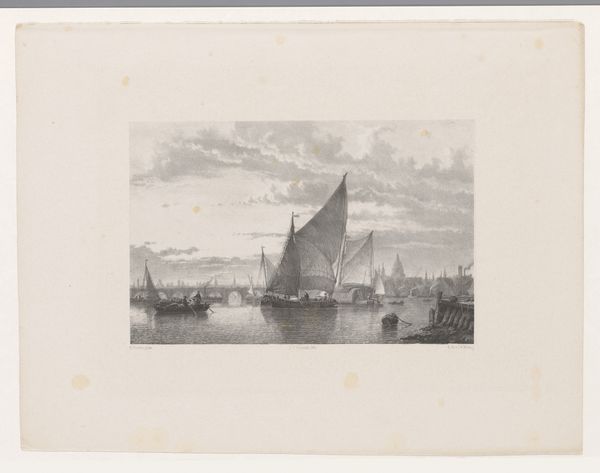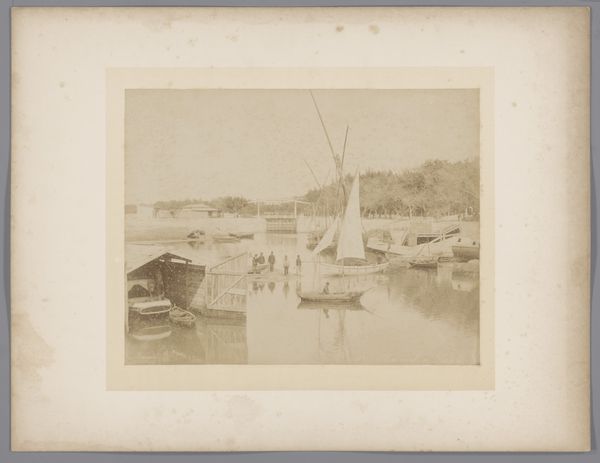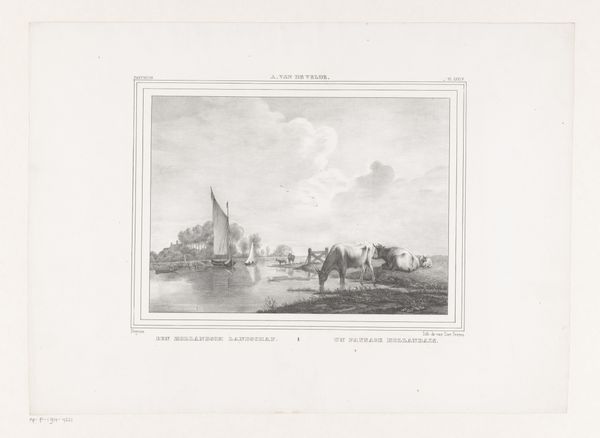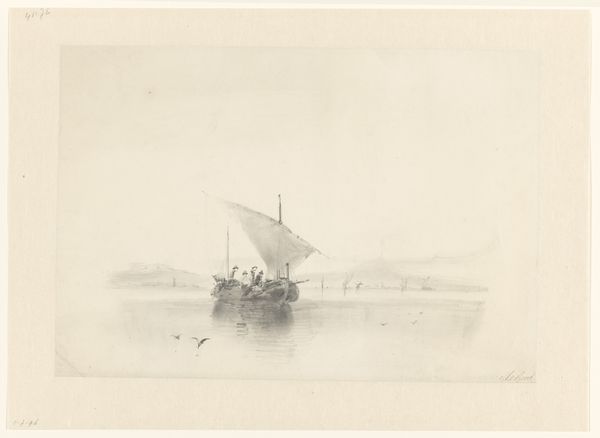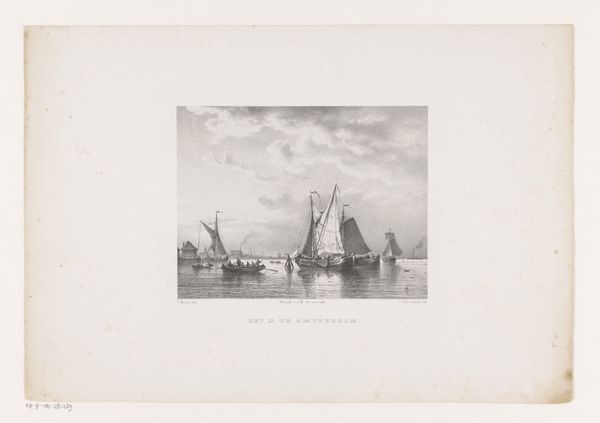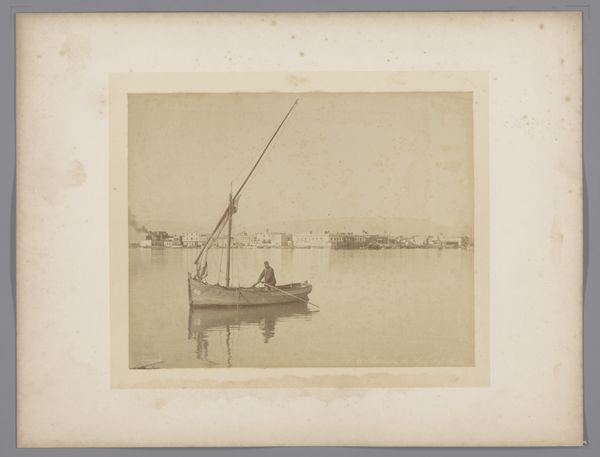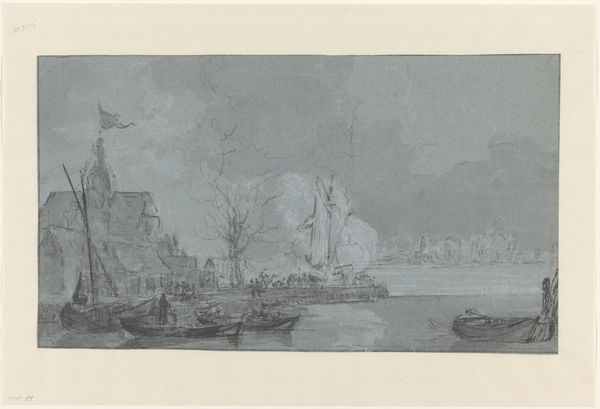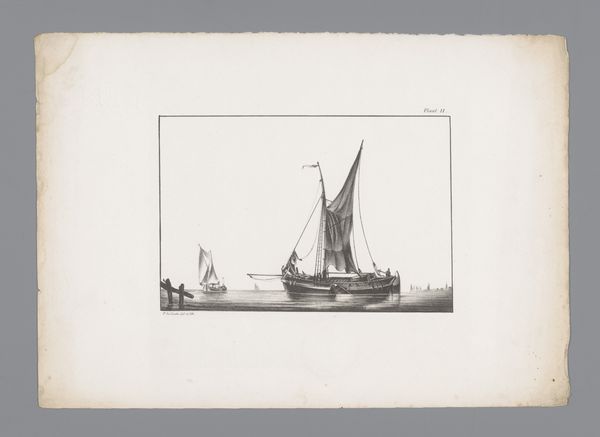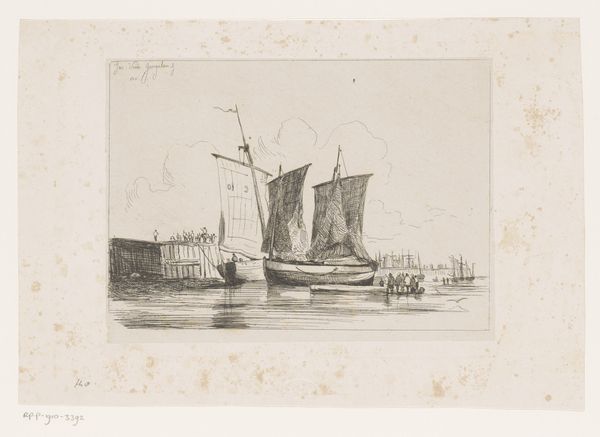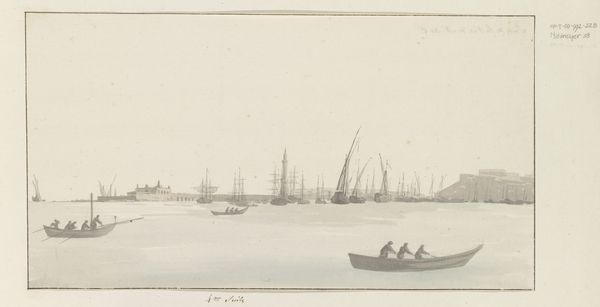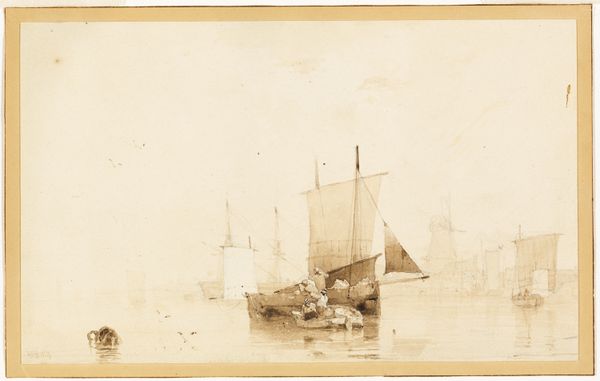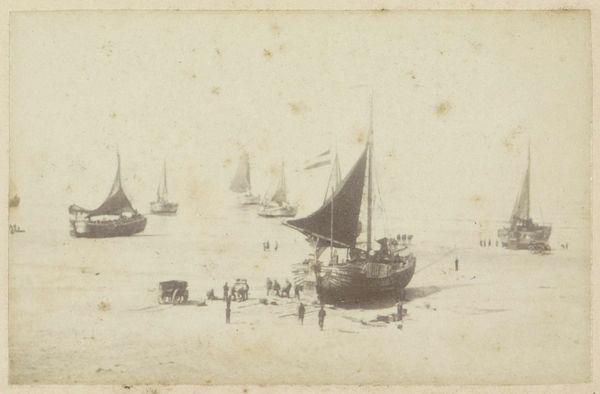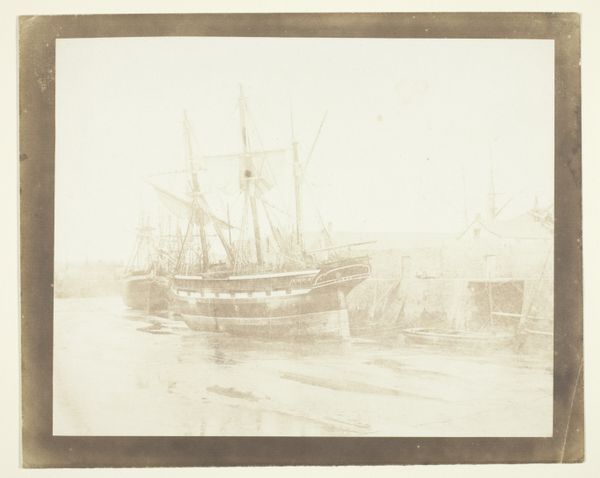
Fotoreproductie van schilderij met een riviergezicht met koeien op een schuit 1864 - 1879
0:00
0:00
photography, gelatin-silver-print
#
landscape
#
photography
#
gelatin-silver-print
#
genre-painting
#
realism
Dimensions: height 102 mm, height 58 mm
Copyright: Rijks Museum: Open Domain
Editor: Here we have Leonard de Koningh’s "Photographic Reproduction of a Painting of a River Scene with Cows on a Barge," likely created sometime between 1864 and 1879. The subdued tones lend the image a contemplative feel. What's your interpretation of this gelatin-silver print, beyond just face value? Curator: The beauty of this piece, I think, resides in understanding it as a re-presentation, right? Not a scene from life, but a photograph of a painted image of life. Consider the socio-economic implications. What does it mean to reproduce an idyllic image of rural life at a time of increasing industrialization and urbanization? It could function as a visual counterpoint to those rapid societal shifts. Editor: So, almost like a yearning for a past that's rapidly disappearing? Curator: Exactly! And it invites us to think about the romanticization of rural labour, obscuring the often harsh realities faced by those working the land. Who is consuming this image, and what are they meant to feel? Does the removal of this scene into the realm of photograph and artwork reinforce those divisions? Editor: I hadn't considered the divide between the viewers and the subject matter that way. I was mostly seeing it as an interesting example of early photographic reproduction. Curator: It's easy to see the technological advancement, but grounding it in the social landscape of its time unlocks so much more, doesn’t it? Even the "genre-painting" aspect signals a focus on everyday life, which can be a political statement in itself, drawing attention to those often overlooked by history. Editor: This has really altered my perception. Now I see it as not just a pastoral scene, but also a commentary on social and economic stratification. Curator: That’s the power of contextualizing art. It allows us to view images as active participants in historical dialogues, not passive reflections.
Comments
No comments
Be the first to comment and join the conversation on the ultimate creative platform.
